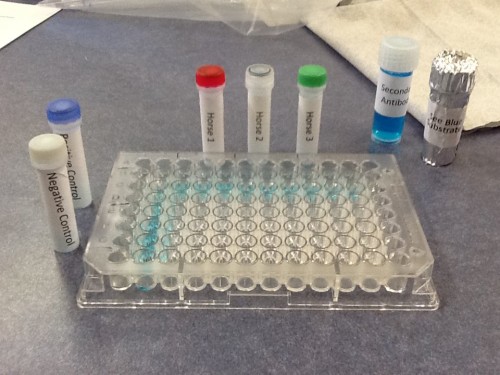ELISA technique with materials supplied by Zoetis Australia.
This week we had another opportunity to connect with the Gene Technology Access Centre via Polycom. The topic of this session was the Hendra virus and a method to detect antibodies with a colour change (called ELISA – Enzyme-Linked Immuno-Sorbent Assay). We are very grateful to Zoetis for supplying the materials for this practical work and Fran at GTAC for stepping us through the process.
In a suburb of Brisbane in 1994, a horse-trainer and fourteen horses died of a mysterious illness within days of falling ill. CSIRO’s Australian Animal Health Laboratory, in Geelong, swung into action and worked intensively on blood and tissue samples for two weeks before identifying the virus responsible as Equine morbillivirus. However, further genetic analysis showed that the most appropriate classification of the virus was to place it in a new genus within the family Paramyxoviridae. It was later renamed Hendra virus, after the name of the Brisbane suburb in which the original outbreak occurred.
Zoetis Australia is a global animal health company who research and create animal medicines and vaccines, complemented by diagnostics products and genetics tests. As well as a Hendra virus vaccine, they have developed a technique for determining if an animal has virus antibodies present, which indicates that the individual has been exposed to the disease or has been vaccinated previously. We will use this technique to determine if three horses have had prior exposure to the disease or if they need to be vaccinated or receive booster shots.

